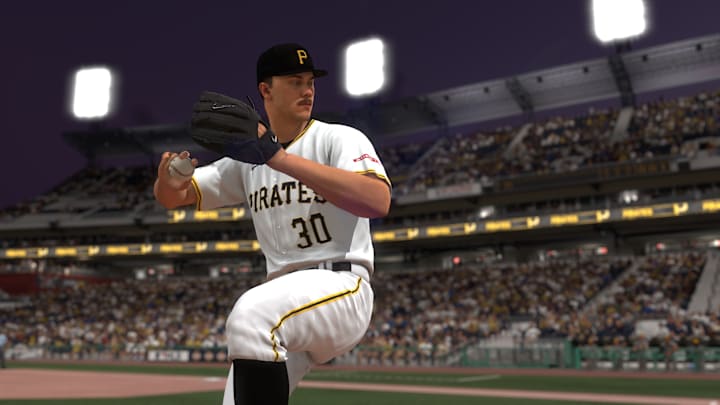MLB The Show 25 has a plethora of pitches to learn. There's everything from the normal four-seam and two-seam fastballs to more old school options such as the palmball and the screwball. Here are the most effective pitches in this year's game:
Sinker (Specifically Inside)
I was recently in a Reddit thread where a player was flabbergasted at the way high-level players were throwing. Pitchers with 98 mph heaters were finishing the game with 10 percent fastballs thrown, the rest being sinkers and sliders. The inside sinker has been one of the strongest pitches in this game for years. It's hard for a batter to get to and put any real power into his swing if it's placed properly.
Also, the improbable lineups in Diamond Dynasty are tailor-made for groundballs. While a real baseball team would have some scrappy hitters that rely on their speed, it's not uncommon for a Diamond Dynasty lineup to feature the likes of Babe Ruth, Juan Soto, and Mark McGwire and four more guys in the same mold. That lineup is powerful and explosive, but it is not fast.
The sinker also tunnels well with high-speed fastballs, and sliders, which tend to break in the opposite direction.
Screwball
The screwball, also called a reverse curve, moves in the opposite direction of most breaking balls. Its unusual delivery makes it look like a normal fastball until its late break. After seeing this confusing junk for a couple of batters, it makes a fastball look like it's going 150 mph.
There's a running gag that the screwball "screws" up your elbow. But these are virtual athletes, and they can throw as many as we need them to. This was a favorite pitch of Fernando Valenzuela, who is currently in the game as a collector reward. Out of the bullpen, Devin Williams has this pitch and combines it with a blazing fastball.
Sweeper
This pitch is gaining a lot of attention in real-world baseball, thus it now appears in MLB The Show. It's a slower version of the slider, typically moving horizontally and thus "sweeping" across the plate. Good players can generate as much as 15 inches of horizontal break. Dodgers phenom Shohei Ohtani, who is superhuman, can get up to 20 inches of break on his.
Since it's a version of the slider, it mixes well with sliders. It also works well with fastballs because it can look similar until the bottom falls out before its horizontal break.
Fastball
Everything in baseball revolves around the fastball. Many meta pitches, such as the sinker, are just different versions of a fastball. With all the stuff I've told you about pitching, you know which of my starters has the most wins? A 79 overall Randy Johnson because he has a 100 mph fastball with a powerful delivery. Some people just quit when facing him.
The fastball is also the most accurate pitch, and in pinpoint pitching it is the simplest one to throw. It's the foundation of several of the tunnels we've talked about. It can make batters look silly when thrown high, or jam them inside. It's one of the hardest pitches to deal with, even when the batter knows it's coming.
Changeup/Circle Change
As I've mentioned countless times, one of the best combos in the business is fastball/changeup. The great Warren Spahn once said, "Hitting is timing, pitching is upsetting timing. "The circle change has more movement than a regular changeup, increasing the chance of confusing the hitter and upsetting his timing.
But I'm a greying gamer, and for pinpoint pitching the motion is an entire circle. If you mess up that motion there's a much higher chance you'll hang the ball, and it will end up in the cheap seats. So I don't mind using pitchers such as Al Leiter or Bob Gibson, who feature good old-fashioned changeups with a less complex input required.
I would practice them both and see which one you feel best about.
